All the most important festivals and events of Kefalonia have religious connotations.
Orthodox religion and Christianity form the basis of Greek culture and the major holidays are associated with the worship of Christ or the commemoration of the Patrons.
If you are travelling early summer season you may celebrate with us, Easter in Kefalonia, which, as in all Greece, is a deeply spiritual event.
The first ceremony takes place on the Holy Friday when the “Epitafios”, an imitation of the Christ’s funeral bier, is decorated with many flowers by the local women. The “Epitafios” is then paraded through the streets of the villages.
A great celebration also takes places on the Holy Saturday, for Christ’s triumphant return, the Resurrection. At the stroke of midnight, all the lights of the churches are put out to symbolize the darkness which enveloped Christ as He passed through the underworld. Then the priest appears holding aloft a lighted taper and chanting “Afto to Fos… “(This is the Light…) and uses the Holy Flame to light the candles of nearby worshippers. These worshippers then share their Light with their neighbours, until the entire church and the courtyard is illuminated by the candlelight. Fireworks are set off and each person in the crowd responds with set joyous responses. After midnight, the families and friends return home and if their candles are still burning, a cross is made in the doorway with the soot to protect the house for the coming year and a candle stays lit for the night. The family gathers to eat the “Mayeritsa”, a soup made from lamb tripe, rice, dill and lemon as the fasting period is over.
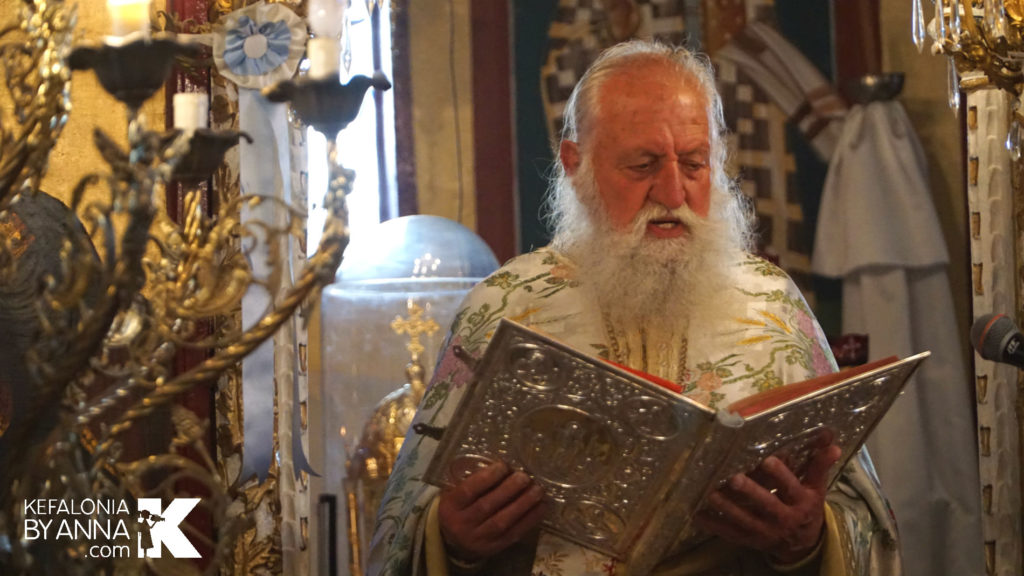
The celebration of Easter Sunday at home is usually identified by a family lunch with whole lambs cooked on the spit, red painted eggs which are broken between the family and friends and local folk dances accompanied by traditional music.
Easter Monday, in Vlachata, there is the procession of the icon of Sissia Monastery.
During the month of June, we must note the celebrations for St. Genessios Prodromos at Fokata, Tzanata and at St. Thomas – Karavados. In recent years, magnificent feasts are held on June 29th in honour of the Sainted in Glory Apostles Peter and Paul. The epicentre of the celebrations is St. Paul the Apostle’s church in Pessada.
June 29th ,the same day, celebrations are held in St. Peter’s Church in Valerianos village and the Twelve Apostles ‘s Church in Havdata.
The celebration is significant in light of the ever-widening acceptance of the theory that identifies Kefalonia as Meliti. According to Praxeis, St. Paul was shipwrecked on Meliti during his journey from Palestine in 57 AD, when he was being transferred to Rome to stand trial. The theory proposes that based on Praxeis descriptions, Kefalonia is the island of Meliti and not Malta as it was previously believed.
July is also full of celebrations and feasts in Kefalonia. On the day of the Deposit of the Theotokos’ Sacred Belt, the devout are taken by boat to the tiny Dias Island on a pilgrimage to the Icon of Theotokos Vlahernon.
July 7th, Ag. Kyriaki’s Day is celebrated in the villages of Xenopoulo, Prokopata and Michata. The next day, July 8th, a celebration in honour of St. Prokopios is held in Kambitsata.
July 11th, Ag. Efimia’s Day is celebrated in grandeur in Kefalonia and especially in the town of Agia Efimia. The Metropolitan of Kefalonia officiates at Vespers, Divine Liturgy and the Litany of the Holy Icon. The Metropolitan also attends a festive dinner given at his home by Reverend Ierotheos Amitsis, Abbot of the Monastery of Mother of God at Themata.
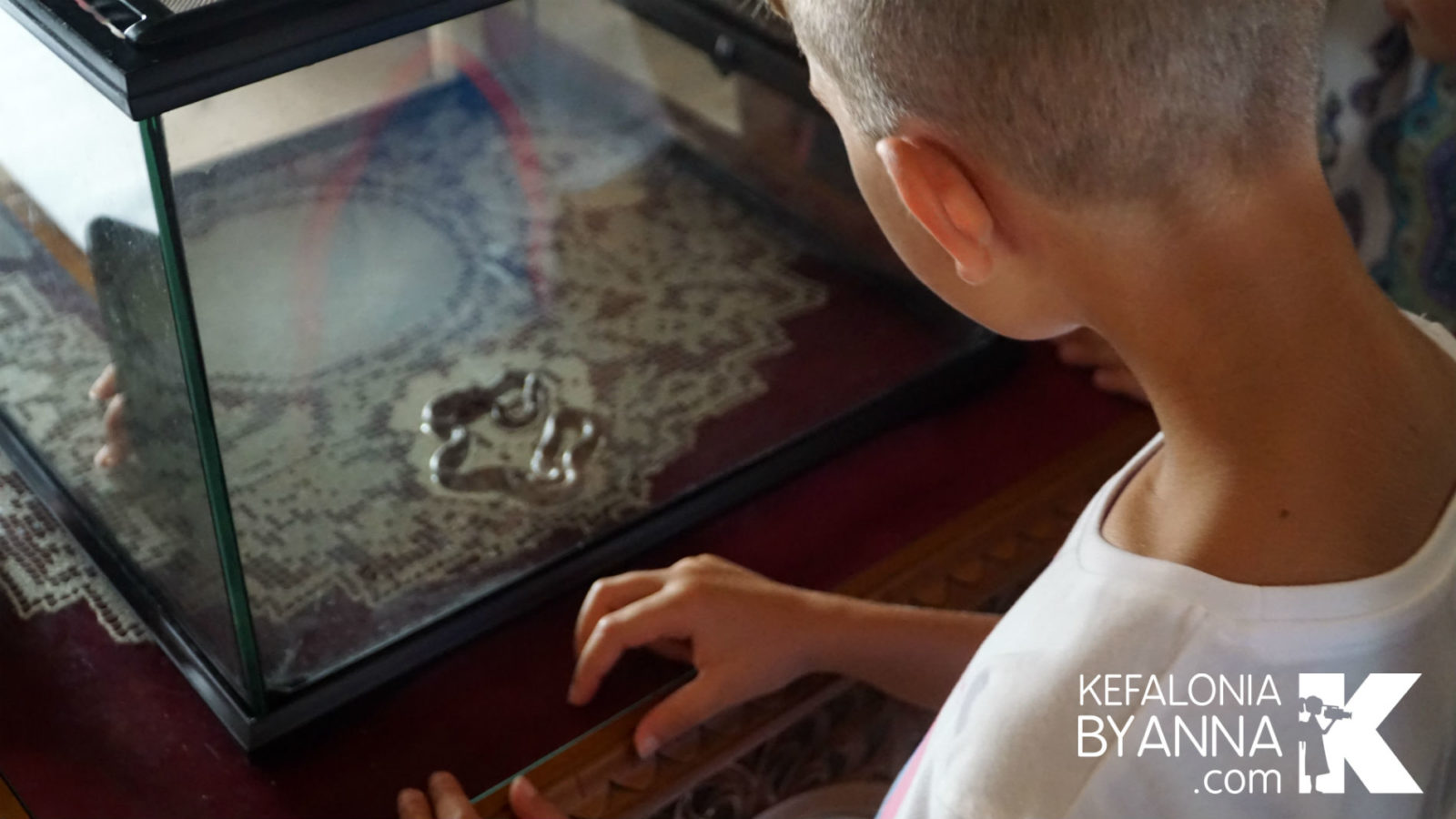
An excellent feast in held on July 17th in the village of Vlachata in honour of Ag. Marina the Great Martyr. The Vespers and the Divine Liturgy are officiated by the Metropolitan of Kefalonia.
On July 20th , Profitis Elias ‘s Day, celebrations take place in the churches at Razata, Agrapidia, Omala and Kaminarata – Lixouri. The Metropolitan officiates at the liturgy in Kaminarata.
The feast for Ag. Anna in Lakithra is especially magnificent, officiated by the Metropolitan and attended by a large congregation of the devout. Other celebrations on this day are held at Ag. Efpraxia of Tzanata village and Ag. Anna ‘s Church in Lepeda.
The celebrations of July are completed with feasts for Ag. Paraskevi (July 26th) in Xerizomeno-Troianata, Atheras, Metaxata, Mesovounia, Lepeda and the chapel at Faraklata. Ag. Panteleimon (July 27th) is celebrated in Poulata, Kontogourata and Loukerata.
The peak of the summer period and the so-called religious tourism for the island of Kefalonia, comes in August. The first 15 days of the month are dedicated to Theotokos, culminating on the 15th on which day the Dormition is celebrated. Christians refer to this period as the “Easter of Summer”. Within this period, and specifically on August 6th, the Trasfiguration of Christ is celebrated with all due honours in Travliata, Grizata, Poros and Lixouri.
On the eve of the Trasfiguration, the Metropolitan officiates at the Vespers at Travliata in the presence of many devout who later gather in the courtyard of the spiritual centre to celebrate the holiday. On the day of the Trasfiguration, the Metropolitan officiates at the liturgy held in the Church of the Trasfiguration in Poros.
During the two weeks leading to the Dormition, The Theotokos Special Prayers are chanted in all churches throughout the island. The Metropolitan officiates daily at two different churches within his Metropolitan District throughout this period.
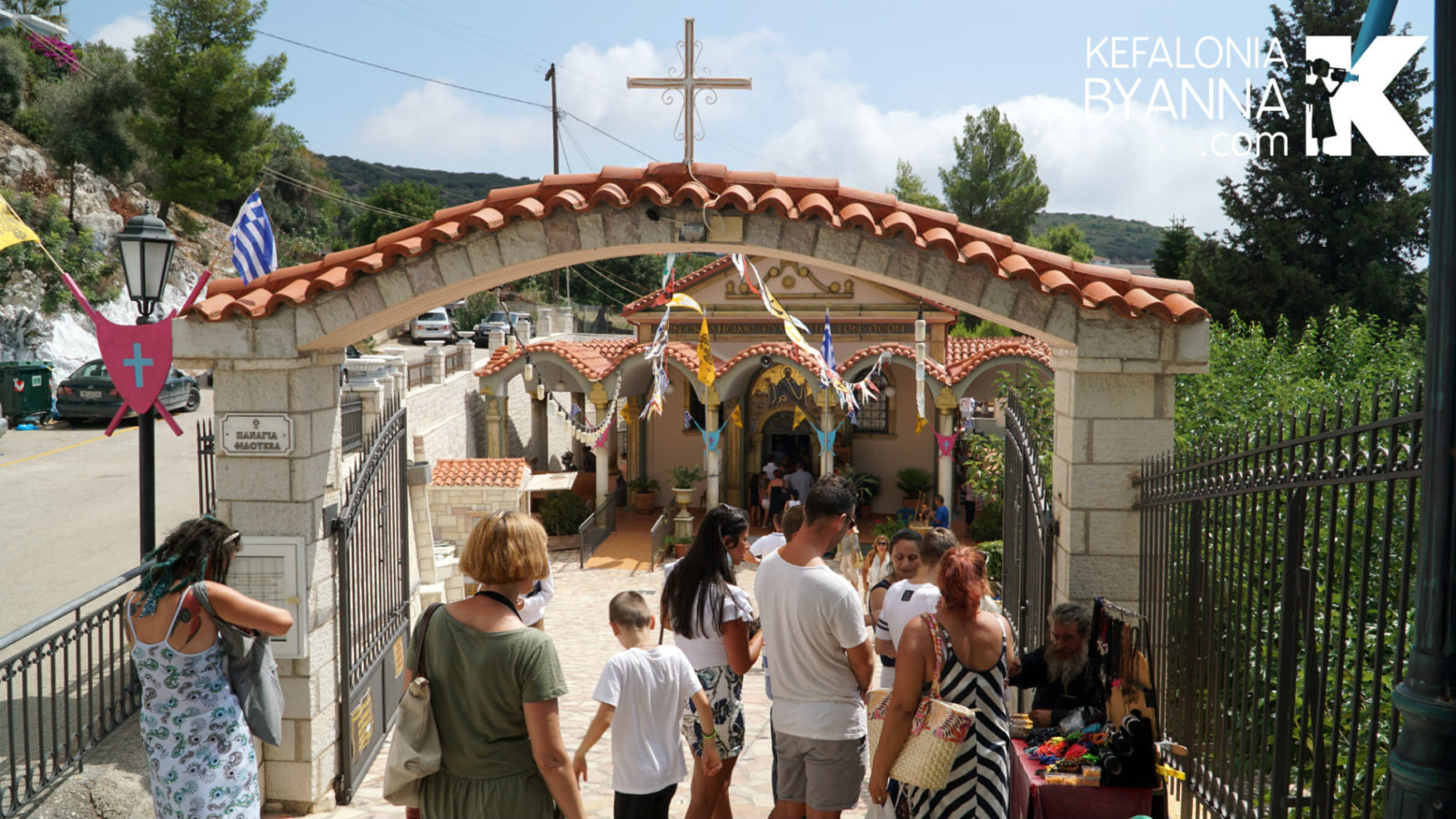
August 11th is the sad anniversary of the 1953 earthquakes. Also commemorated on this day is the miracle of Spyridon that took place in Kerkyra.
On the previous evening, August 10th, Vesper services are held in Ag. Spyridon’s Church in Argostoli to commemorate both events. On the anniversary itself, a memorial service is held for the souls of all those who tragically lost their lives in the earthquakes. In the evening, a mass attended litany of Ag. Spyridon’s icon takes place through the town and the special prayer is repeated. The Metropolitan is present in all these events, officiating and preaching.
Dormition Day on August 15th is celebrated with splendour and magnificence. Feasts are held in Markopoulo and Arginia (the two locations where the small snakes called “Fidakia tis Panagias” appear) attracting large numbers of devout Christians. Feasts are also held at the churches in Theotokos’ honour in Peratata, Simotata, Metaxata, Damoulianata, Kardakata, Lakithra, Digaleto, Koronato Convent and Agrilia Monastery. Night vigils are held at the last two.
We thus come to the great day, the most significant day for Kefalonia and all Kefalonians living on the island or abroad: St. Gerasimos Dormition Day. St. Gerasimos actually died on August 15th of 1579, the Dormition of Theotokos Day. As a result, the celebration of his memory was moved to the next day August 16th.
On the afternoon of the August 15th, St. Gerasimos’ Sacred Relic is moved in a litany procession from the older church that lies over his grave, amidst truly emotional and touching reactions from the devout who express their faith in God and their respect for Ag. Gerasimos.
The Sacred Relic is placed in a specially prepared place within the magnificent new church. Small Vespers begin and the devout start to pay respects from about 6pm until noon of the next day.
An Archieratic Liturgy is held on Saint Gerasimos Day followed by a Litany which is attended by clergy, nuns, monks, officials and thousands of Christians. The procession, which is accompanied by bands, an army honour corp, and boy scouts, ends up at the large plane tree where a prayer is chanted. The Metropolitan delivers a speech and the procession returns to the church where the public continues to worship the Sacred Relic. The Saint’s Sacred Relic is returned to the smaller church and placed back in the larnax in the afternoon. A reception complete with an official dinner is given afterwards in the Convent’s spacious Hall.
In the evening a special event in honour of Saint Gerasimos takes place in Argostoli. First, there is a litany of his icon throughout the town’s streets which ends up at the main square. A special prayer is said and the Metropolitan addresses the congregation.
Kefalonia is one of the places through which Ag.(Saint) Kosmas the Aetolean passed on his preaching journeys. He was well received by Kefalonians and preached in several towns and villages on the island, always leaving behind a Holy Cross to commemorate his passage from a particular place. Saint Kosmas’s Day is celebrated on August 24th. The main celebration takes place in Assos and is officiated by the Metropolitan. A Litany of the Holy Cross and St. Kosmas’ s icon through town, is followed by an official dinner. St. Kosmas the Aetolean’s memory is also celebrated at Agrilia Monastery, Evangelistria’s Church in Faraklata, and other island churches.
August 27th, St. Fanourios’s Day, is a day of special celebrations on the island. The main celebration takes place at Theotokos Sissiotissa in the presence of the clergy and the Metropolitan.
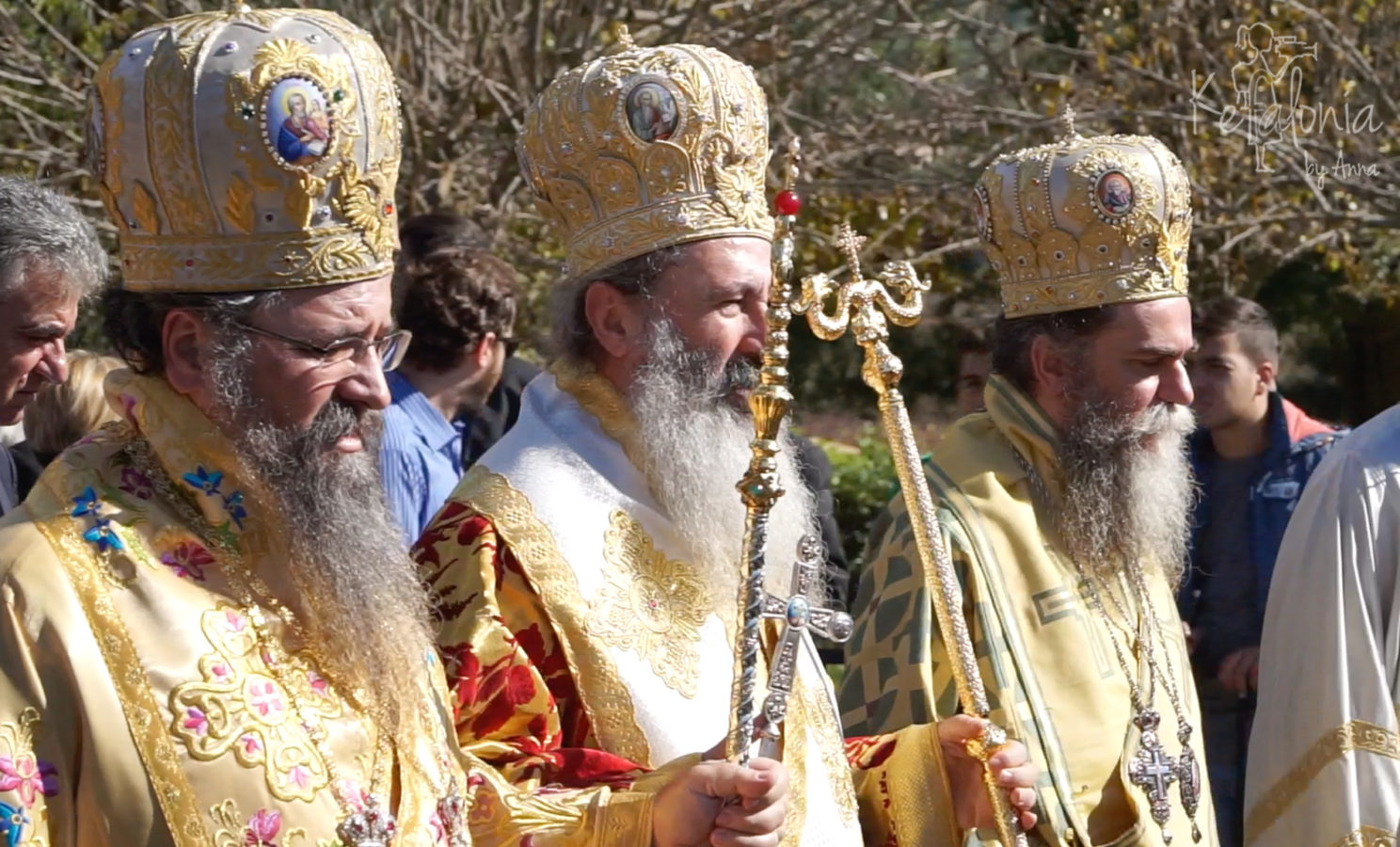
August 29th, St. John the Baptist’s Day, is celebrated in Karavomylos, Dilinata where the celebrations include a vigil, and at Ratzakli.
Saint Anthimos Kourouklis, Patron of Astypalaia, is celebrated on September 4th at St. Gerasimos protectorate church at Lepeda (at the site of His grave). The celebration is always attended by the nuns of the Convents of Saint Gerasimos, St. Andrew and Koronato.
The Holy Virgin’s (Theotokos) Birthday is celebrated on September 8th at Paleohersou Monastery in Erissos and at Kouvalata. The celebration is always attended by the Metropolitan and a large congregation from all over the island. The Paleohersou Monastery Complex is closely identified with the devout clergymen – the Sklavounos brothers – Reverend Nektarios and Reverend Panagis, who for a number of years now perform pastoral duties for the entire Erissos district. Divine Liturgy is followed by a Litany of the Holy Icon. The celebrations are concluded at a dinner given in the Monastery. Paleohersou Monastery has a 20-bed capacity guest house that provides free boarding for a day or two for those who wish to visit. Anyone interested in staying at the guest house should contact the two aforementioned clergymen.
On September 14th, Holy Cross Day, celebrations take place in two of Kefalonia’s historic Monasteries: Kipouria and Estavromenos in Pessada.
At Kipouria Monastery, Vespers are chanted from 9 pm the previous evening till 2 am on Holy Cross Day. After Matins and the Doxology, the Raising of the Holy Cross is performed in the Church courtyard. The ceremonies are attended by hundreds of devout Christians, especially from the Palliki district. After the Cross Raising Ceremony, the Metropolitan departs and Divine Liturgy continues in the church. A similar celebration takes place in Estavromenos of Pessada where the Liturgy is officiated by the Metropolitan.
Theotokos Myrtidiotissa, whose base of worship in Greece is the island of Kythera, is also honoured in Kefalonia at Mantoukata and Drapano’s Church where the Sacred Icon is kept. Theotokos Drapaniotissa is the Patron of Argostoli. For this reason, the ceremonies in her honour are organized by the Municipality of Argostoli. Vespers and Divine Liturgy are officiated by the Metropolitan of Kefalonia in the presence of municipal officials. A litany takes place in the afternoon. The procession moves through the streets of Argostoli, a prayer is said at the town main square and the icon is then taken to St. Spyridon’s Church. It is customary for the icon to remain in this church for one week during which Vespers and Divine Liturgy are held. At the end of the week, the icon is returned, once again by a procession, to Drapano ‘s Church. This holiday is also celebrated in Ag. Thekli village in Lixouri.
September 26th is St. John Theologos ‘s Day – celebrated in Sarlata, Razata and Kontogennada.
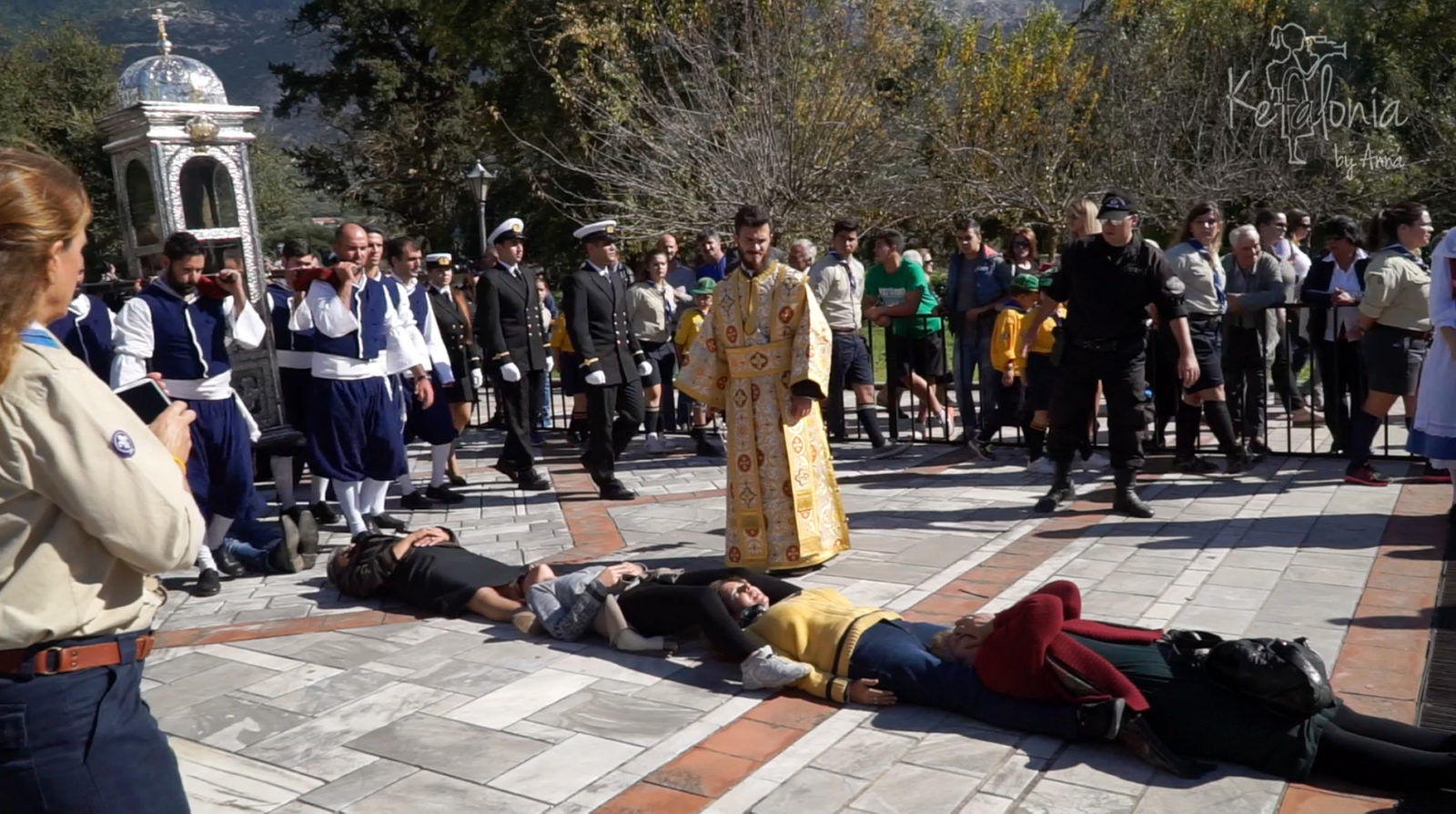
On October 20th, everything revolves around the commemoration of the Restitution of St. Gerasimos’ Sacred Relic. The ceremonies take place at Ag. Gerasimos Convent at Omala. The ceremony schedule of August 16th is repeated once again with the participation of clergy, the nuns and many officials. Small Vespers is followed by a dinner given at the Convent Hall for the clergy and the officials. The ceremonies proceed with Great Vespers and Matins officiated by the Metropolitan. The Saint’s Praises are chanted, around 1 am, followed by the Divine Liturgy. The Metropolitan departs around 2 am. On October 20th, an Archieratic Liturgy and Litany of the Sacred Relic take place. Literally thousands of Christians come to pay their respect to Saint Gerasimos during the two days. At the conclusion of the ceremonies, the Sacred Relic is taken back to the smaller church and placed in its larnax.
A celebration is also held on this day in St. Gerasimos Church in Lixouri where the Saint’s Icon is litanized through the town in the afternoon. A prayer is said at the main square and the Metropolitan addresses the congregation and the officials.
St. Dimitrios Day on October 26th is celebrated at Saint Gerasimos Convent as it coincides with the Restoration of Saint Gerasimos’ Day celebrations. Also celebrating in Ag. Dimitrios’ honour are the churches in Troianata and Faraklata.
The holiday that truly touches the souls of Christians in November is that of the Theotokos Entrance on November 21st. Two grand celebrations take place: one in Theotokos Sissiotissa (Argostoli), and the other in Skineas village (Lixouri).
The Metropolitan of Kefalonia participates in both celebrations (which are held at different times) where he delivers a sermon. Vespers at Sissiotissa are scheduled between 7:30 and 9:00 pm while in Skineas from 10:00 pm to 2:00 am. The Metropolitan officiates at Matins and Doxology and departs while the Liturgy is in progress. He officiates the Divine Liturgy at Sissiotissa Church.
info from Holy Metropolis of Kefalonia site: www.imk.gr
